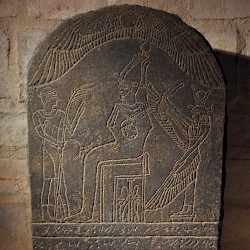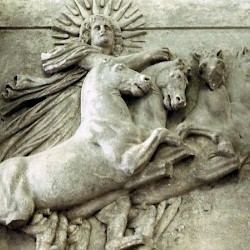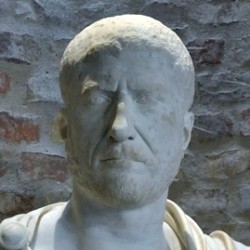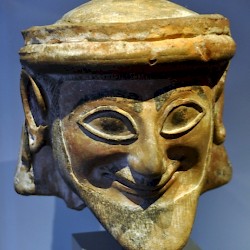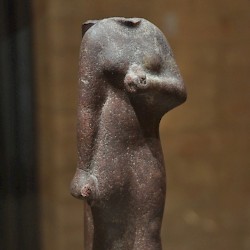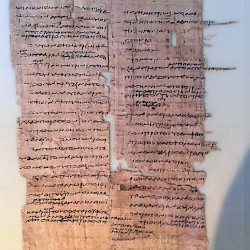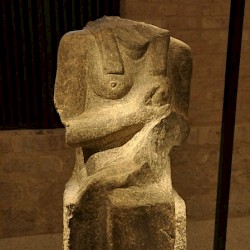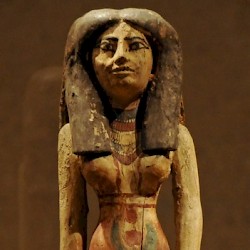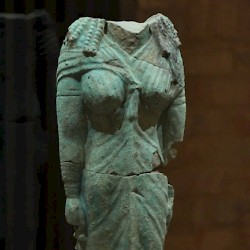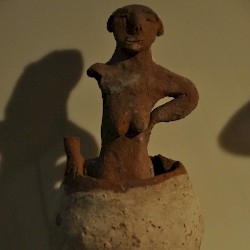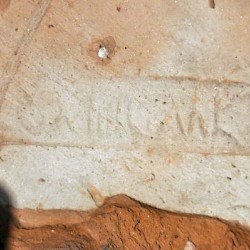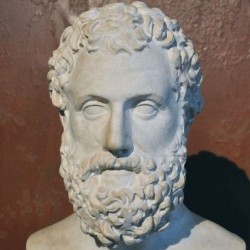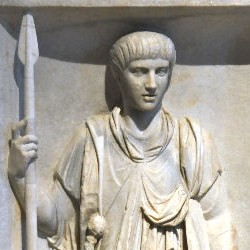Berlin, Neues Museum
Q157316The Neues Museum was, for me, the main reason to visit Berlin last week. It turned out to be a bit of a disappointment, although I must add immediately that there were so many interesting objects that I had to visit the museum twice.
A part of the problem is that there are two collections: the Egyptological one, with the famous bust of queen Nefertiti, and the Prae- and Protohistorical one, which include Schliemann’s finds from Troy (or the replicas). After the Second World War, both collections were moved to the Charlottenburg palace in West-Berlin, and it was only recently that they returned to the Museum Island. The visitor who enters the museum, has to turn to the right to enter the Egyptological department, and to the left to reach the Prae- and Protohistorical collection. Upstairs, the two collections get mixed. I was confused when I left the room with the papyrus texts and suddenly stood eye to eye with the Xanten boy, and found a lot of Roman military archaeological finds in the next room.
Now this is just infelicitous, partly caused by the arrangement of the rooms in the building. Unfortunately, it happens in several places. For instance, in the basement, you will find rooms with art from ancient Nubia opposite some Cuman reliefs, which makes you wonder whether you’re standing in the Egyptological or the Protohistorical department. There would have been less confusion if the two collections had been put on different floors.
Another problem is the lack of explanation. In the collection of Cypriote art, I found several signs saying that the finds were from “verschiedene Fundorte” (various excavations). Somewhere else, I noticed a spearhead and arrowheads from the “second half second millennium BCE”, without further information. Only the Zeeuws Museum in Middelburg is worse.
The Egyptological department also betrays a certain laziness. Granted, it starts brilliantly, with a room called “prelude”, in which you learn a bit about Egyptology as a discipline. But then, there is one room on pharaohs, one room on chronology, one room on the afterlife, one room on deities, one room on papyri: the thematic approach you will find in every Egyptological museum, with the obligatory stress on the New Kingdom. In Berlin, where the Pergamonmuseum is on just a stone’s throw distance, it might have been possible to give more attention to the Late Period and stress different aspects of Egyptian civilization. To be fair, it is just my personal preference to see how ancient civilizations interacted and it is only my opinion that it is interesting that the chronology of the Twenty-fifth dynasty is partly based on a chronicle from Assyria, but I also think that it is a respectable perspective that is consistently ignored.
Often, the objects are difficult to see. For instance, there is a German idol on display in a glass box. Now I understand that you cannot show that wooden object without protection, but the glass is essentially a mirror. Even people walking five meters away, disturb your view, and when I returned on a different moment of the day, it was still difficult to study the object. A different type of glass and a better lighting concept might have wrought miracles.
On the other hand, the way the papyri are shown deserves the highest praise. The object you want to see is usually hidden (and protected against the light), but if you press a button, it will move out of its case, and you can see a planet list from the Fayyum, a record of a Sothis observation, the Elephantine Aramaic texts about the god Yaho, a Homeric Dictionary, or the Gnomon of the Idios Logos. That is splendid, although I felt like the proverbal classicist visiting an archaeological museum, dutifully looking at all objects but becoming enthusiastic only when he can read a text.
Finally, the building itself is interesting. During the Second World War, it was damaged beyond repair, and the creators of the new museum have accepted this. Old frescos are left as they were: damaged, decorating a bare wall of bricks. On many places, you can still see traces of fire. It’s the museological equivalent of Berlin’s Gedächtniskirche. It is absolutely fascinating.
This museum was visited in 2010.




